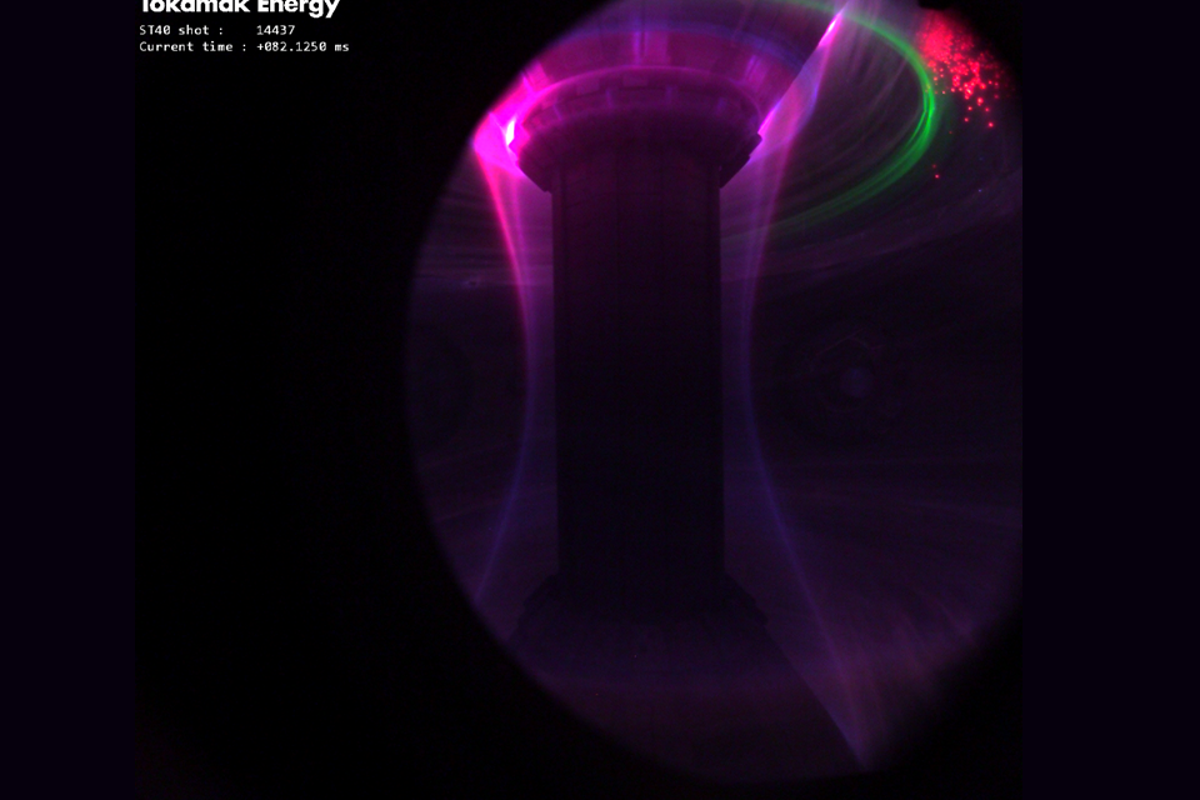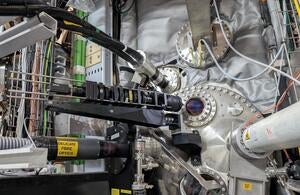
UK scientists are celebrating landmark progress to using fusion as a clean energy source, after managing to “capture a star” in a specially built machine.
In the first images released from a new high-speed colour camera, it has been possible to picture the equivalent of a star on Earth, created by the glowing pink of plasma.
In the footage, lithium is dropped into the plasma, a state of matter that has reached tens of millions of degrees, causing it to glow red when energised.
Within the company Tokamak Energy’s spherical machine, known as ST40, the matter can be seen turning green before tracing the magnetic field lines, revealing the plasma’s path.
Carried out in partnership with the U.S. Department of Energy (DoE) and the UK Department for Energy Security and Net Zero (DESNZ), the machine in Oxford is currently subject to a $52m upgrade focusing on lithium to advance fusion research.

In order to create fusion, the atoms of hydrogen must be heated to tens of millions of degrees until it becomes plasma, a state of matter that cannot be contained by any solid wall due to its heat.
It is instead confined with magnetism, with the machine using small magnetic coils to stabilise the plasma’s outer edge.
In future power plants, when a mix of two forms of hydrogen (deuterium and tritium) are heated to form a controlled plasma at high temperatures – hotter than the core of the Sun – they will fuse to create helium and release energy which can be harnessed to produce electricity and heat.
This hot plasma of fuels is confined using strong magnets in a device called a “tokamak”, which gives the company its name.
Scientists hope to use fusion generate electricity and heat in the same way as existing power stations. Fusion is extremely efficient, creating many million times more energy per kilogram of fuel, than burning coal, oil, or gas.
Stuart White, Tokamak Energy spokesperson, said: “We’re very proud to be operating one of the world’s most advanced fusion energy machines at our Oxford HQ.
“These new images are a striking look into the future, while providing invaluable data for our team today as we partner with governments and businesses to deliver clean, limitless and secure energy through fusion.”
Laura Zhang, Tokamak Energy physicist, said: “The coloured camera is especially helpful for experiments like these. It helps us immediately identify whether the gaseous impurities we’re introducing are radiating at the expected place, and whether lithium powders are penetrating to the plasma core.”
Big Tech training teachers to prepare classrooms for AI revolution
A mysterious glow is coming from the middle of our galaxy
Pinterest set to make major change following user backlash
ChatGPT creators respond to outrage after it says it will start generating ‘erotica’’
Apple explains how its new Watch can measure how hard your heart is beating







